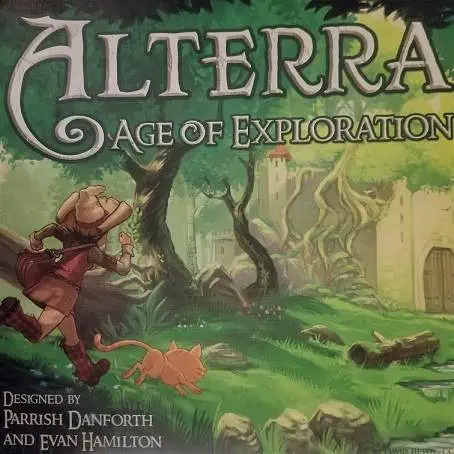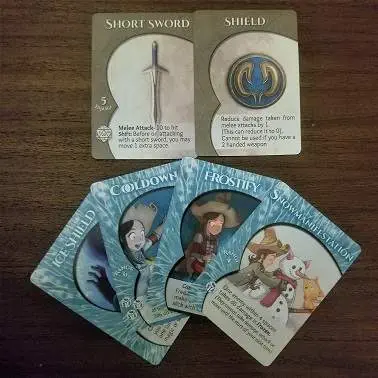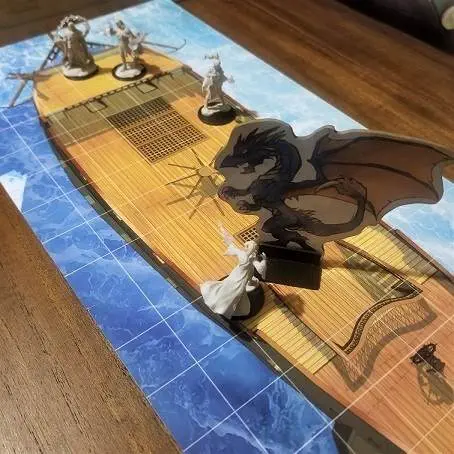
The world of Alterra is on the cusp of a new age. Science, magic, and exploration are progressing at an astounding rate and it is an exciting time to be a part of that world. Parrish Danforth’s Alterra: Age of Exploration will let players do just that! It is an RPG-lite gaming system for 2-6 players soon to be released into our world via Kickstarter. Alterra: Age of Exploration combines roleplaying with board game elements to help immerse players in the action. This open license game uses artwork and story elements from the popular webcomic Pepper & Carrot by David Revoy. Other illustrations and graphic design work were provided by Matt Holmberg, Alexander Gesse, Olivier Désirée, Aikurisu, and Party of 2. Currently, there is a version of the game available on DriveThruRPG, should players want to try it out before the Kickstarter! We like what we have seen so far with the prototype we were given for this preview, and can’t wait to see what is offered during the campaign!
Character creation is quick and simple in this game. Gone are the days of spending hours looking over charts and crunching numbers to portray your persona on a character sheet. Even inventory is handled simply via the card system with key items and spells represented in the deck. All other items such as food, clothing, and personal effects are handled by a simple common-sense system of “would I really have this with me?” Players will choose a school of magic and basic weapons at the beginning of each session, so they are never locked into a decision if they elect for something different. Treasure and coin are kept track of as more of a side note than a crucial part of progressing one’s character and that’s really the nuts and bolts of getting ready to play a game. The rest is mostly left up to the imagination of the players and the storyteller themselves. With the lack of hard and fast rules presented by this system, there is nothing that is going to bind a player into a specific role or create a sense of buyer’s remorse in their selections. Each encounter comes with suggested setups and materials to make setup a breeze. Should a player not want to use the included maps, other options are mentioned as well.
Determining the capabilities of a character and the results of their actions is primarily handled using a simplified system of simply asking the storyteller if it can be done with a simple yes or no response. If there is the chance of stronger consequences, such as trying to hide or pick a lock, then a 20 sided die is rolled. A 20 on the dice means some astounding result while 1 through 9 is a failure to be described by the storyteller. Any other numbers result in a typical success. Combat is handled in much the same way but is slightly more structured in the options provided to a character. They can take a move action along with one other action such as attack, dodge, run, cast magic, or perform some specific action each turn. The same roll for success check system applies and weapons will do a flat amount of damage while spell effects will need to be rolled for. Otherwise, the game focuses heavily on social interaction and the storyteller will, therefore, be tasked with creating an engaging array of characters for the players to interact with sans dice rolls to fill out their adventure.
The included adventure that we got to play had us setting out to participate in the Komana Magic Contest. Those familiar with the stories of Pepper & Carrot may recognize the name of this event. Our story was loosely set in their world and we love the webcomic so we were prepared to dive right in. In this particular adventure, players take on the role of a group of magic-users on their journey to get to said contest. This journey, however, does not go as smoothly as planned as the world of Alterra is full of dragons, pirates, and other threats. At key points in nearly every chapter, players are presented with choose-your-own-adventure type choices. Each choice results in different outcomes that can drastically change the campaign both in the story and in the length of the game as dictated by the module. The allure of this short campaign is that the overall progression never strays too far from the core storyline. No matter what occurs, players will ultimately still make their way to the contest in Komana, which makes it an excellent choice for those who are more interested in a story than a system or who are making their first foray into RPGs.
To be honest, our game group had some pretty mixed feelings about Alterra: Age of Exploration. The adults-only group we tried playing with didn’t terribly care for the game as most of them prefer a stronger rules system and felt that the few rules that are there needed more development and to be expanded upon. We took note of this and mostly agree with that particular group. We switched gears and took up the role of the storyteller with a group of young kids (and some of their parents as needed/desired) and they loved it! The included story grabbed their attention and they were able to focus on using their imaginations to tell a story rather than what abilities or items they had written on a piece of paper. The quick character creation, easy adaptation, and simplified combat system all played well to a group with less commitment and attention span. We felt that Alterra: Age of Exploration works best as a way to introduce new players to storytelling games and RPGs in general, but is heavily group dependent. One of the things that we really loved about the game is that it is not only a good introduction for new roleplayers, but also for those wanting to learn to run a game. The system is approachable and can be learned as you play. We would love to see where the system goes as a whole and think it has a lot of potential with only some minor additions or changes. More modules will help flesh out the world of Alterra and create further enjoyment beyond what we have seen thus far and we can not wait to see what else may be in store for this open license game.
All photos of Alterra: Age of Exploration were taken and edited by Krista.

